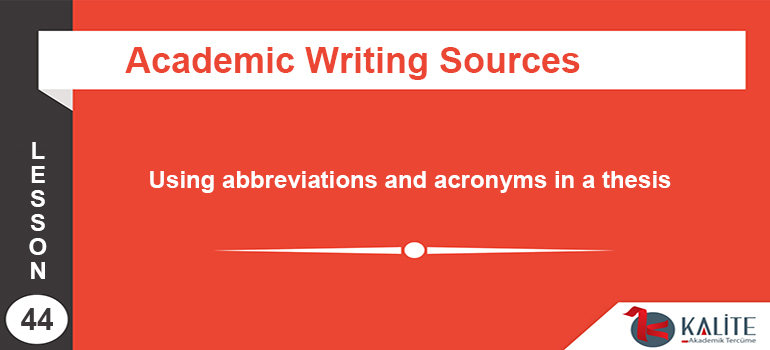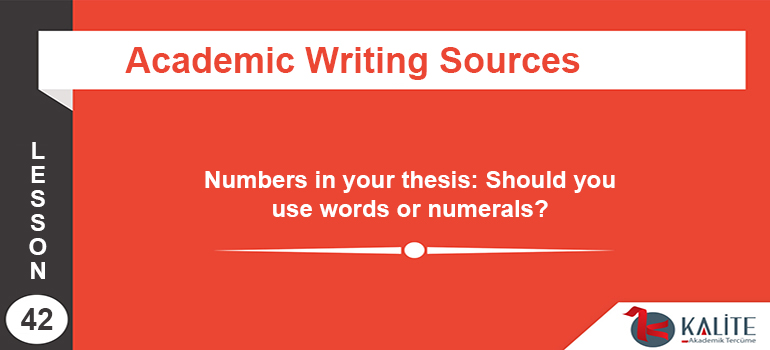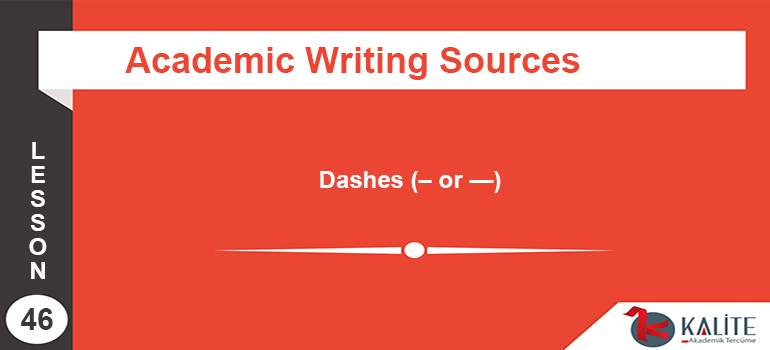Dashes (– or —) Dashes are used often as a matter of emphasis or to signal a change in tone, and the grammatical rules for their use are loose—they can be used in some of the same places as commas, colons, semicolons, and parentheses. Beginning writers often confuse dashes with hyphens, probably the most common dash-related mistake.
- akademik@kalitetercume.com.tr
- +90 (324) 327 17 11 - +90 (501) 321 82 50
Blog Classic

This something: Clarify your “this”
This something: Clarify your “this” Good academic writers value nothing if not clarity. To this end, every time you use a demonstrative pronoun (this, that, these, or those), use a word or a short phrase afterward to clarify what the demonstrative pronoun refers to. Compare clarity in the following: Not clarified The income of middle class families

Using abbreviations and acronyms in a thesis
Using abbreviations and acronyms in a thesis Abbreviations are a great way to make your writing concise and save you time. However, it’s important to use them correctly. What is an abbreviation? An abbreviation is a short form of a single word or a multi-word phrase that is usually made by deleting certain letters. In

Write shorter sentences to clarify your thesis
Write shorter sentences to clarify your thesis Writing that is concise presents ideas and information clearly and does not use more words than are truly necessary. Conciseness is an important characteristic of academic writing, especially given how complex the subject matter frequently is. Two of the biggest enemies of concise writing are inflated phrases and redundancies. It’s easy

Numbers in your thesis: Should you use words or numerals?
Numbers in your thesis: Should you use words or numerals? Even experienced writers find it tricky to decide how to handle numbers within the body of their thesis. To make matters worse, many style guides use very different formats. What is a student to do? This article provides tips that will help you handle this



